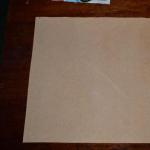Smell of nitron when burning. Determining the type of fabric fibers by external signs
10.03.2017
The composition determines all the properties of the material, and therefore of future clothing. Typically, manufacturers indicate the type and percentage of fibers. But it won’t hurt to know how you can determine the structure of the fabric yourself. After all, it is not always possible to familiarize yourself with the markings, and cases of distortion of information about the material are not excluded.
What determines the composition of a fabric?
Proper determination of fabric composition plays an important role in choosing fabric for sewing. It depends on:
- purpose of the fabric
- cost of material,
- sewing technology,
- choice of style,
- features of care of the finished product.
For clothes intended for summer and winter seasons, daily wear and holiday occasions are selected different kinds fabrics. Items in contact with skin must contain a large number of natural fibers, provide a pleasant feeling, comfortable conditions for ventilation. Outerwear protects against cold - in this case, the thermal insulation and waterproof properties of the material are important. For everyday products, practicality and wear resistance, etc. are important. Knowing the composition of textiles, you can accurately determine its purpose and choose the optimal style.
All fabrics have certain requirements for sewing technology. The specifics of the cut, the choice of needles, threads, and seams depend on the content of different types of fibers. Accurate information allows you to ensure ease of use and high quality results.
Tactile determination of fabric composition
Information about the composition is placed on the labels. Manufacturers, indicating this data, arrange the types of fibers based on their content in the material, from higher to lower values. For example, this one is 60% wool, 30% cotton and 10% polyester. However, if it is impossible to get acquainted with such information, you can try to determine the type of fabric using tactile sensations:
- silk has tenderness, softness, the hand glides over the surface;
- cotton gives a feeling of warmth, is pleasant to the touch, soft, wrinkles easily;
- linen is much stiffer and creates a feeling of coolness;
- the wool gives a slight tingling sensation, warmth, and practically does not wrinkle;
- viscose has a pleasant shine, is soft, delicate, and wrinkles to the touch;
- Nylon, polyester, nylon have a slippery surface, and the material crumbles when cut.
Determination of composition by combustion
The range of fabrics is huge. It is difficult to accurately determine the composition by tactile sensations, and especially to identify the presence of synthetic fibers in mixed versions. The nature of the tissue combustion and the odor emanating from it will help in studying the composition. To determine the type of fiber, you need to pull the thread out of the fabric and set it on fire:
- cotton and linen fibers burn intensely, the flame has a yellowish color, can sparkle, after combustion there remains ash without lumps, which smells like burnt paper;
- the burning of wool and silk is less intense, a ball of dark color remains, when touched it crumbles, the smell of burnt hair is felt;
- the burning of viscose is similar to that observed when burning cotton, but this material burns out much faster;
- When acetate and triacetate fibers burn, a vinegar smell appears, flames yellow color, the resulting lump can be easily crushed with your fingers;
- the lavsan (or polyester) thread burns slowly, soot appears, and a hard ball remains;
- when nylon fibers are set on fire, the smell of sealing wax is felt, white smoke is visible, and a hard dark lump remains;
- polyvinyl chloride thread does not burn, it chars, emitting a chlorine odor;
- Nitron fiber burns in flashes, black soot is released, and a lump remains that can be crushed with your fingers.
Materials can be made from mixed fibers. When burning such filaments, the type of flame and odors depend on the predominant component. It should be taken into account that after burning natural fibers, only ash remains. If there are hard lumps in it, then the fabric contains synthetic impurities.
In order to get a more detailed understanding of the behavior of fabrics of different compositions during combustion, we created the section #burn on our YouTube channel. Join us and enjoy watching!)
There are a number of ways. Of course, the most reliable method is the laboratory method. It includes microscopic and chemical analyses. However, most often we have to resort to the organic method - determining the fabric by eye, touch, crumpling, stretching, tearing, burning.
By appearance linen fabric more shiny, cotton - matte.
Threads cotton fabric smooth, and linen - thickened in places.
To the touch: linen fabric is more rigid, and when applied to naked body gives a feeling of cold.
For crumpling: linen fabric produces stiff folds that are difficult to straighten out. Linen fabric has almost no stretch either in the warp or in the weft, while cotton fabric stretches in the weft.
For thread break: Linen will have pointed ends, while cotton fabric will have fluffy and smooth ends.
For combustion: Linen fabric gives off almost no odor, and when cotton fabric burns, a sharp fire and acrid smoke are released.
In the same way, one can unmistakably distinguish natural silk from artificial And wool from wool mixture and mixed fabrics.

Approximately: artificial silk has a sharp metallic sheen, while natural silk has a soft matte finish.
To the touch: artificial silk is hard, while natural silk is soft. Wool fabrics Depending on the nature of the fiber and its structure, it can be very soft, semi-coarse or coarse.
For crumpling: artificial silk produces a stiff fold that does not straighten out easily. Wool fabrics are the most resilient and elastic. Pure wool fabrics are soft and, once wrinkled, straighten out slowly and completely. Semi-coarse and coarse pure wool fabrics - after crumpling, they give quick and sharp straightening.
To break: natural silk breaks with difficulty, but artificial silk breaks easily, especially when moistened, when it loses up to 70% of its strength. When the thread breaks artificial silk crumbles into individual fibers, and natural silk threads break off evenly without falling apart. Wool thread It does not tear immediately, but first stretches significantly.

For combustion: natural silk is sintered into a ball and goes out, while artificial silk burns out completely. When the wool burns, it sticks together into a ball, goes out, and smells like burnt horn. If the light runs along the thread with the same smell of horn, this is a clear sign of the presence of plant fibers or artificial silk. If the thread burns down to 1-2 cm and then goes out, also emitting a characteristic odor, then the presence of plant fibers or artificial silk makes up a significant percentage.
Wool blends for crushing and stretching do not give the same indicators as those inherent in fabrics made from pure wool.
Usually distinguished in the store synthetic fabric from natural it is no more difficult. Just read the composition of the material on the price tag, or ask the seller. In addition, natural fabrics are often much more expensive than synthetics. However, there are quite a lot of situations where the composition of the tissue is unknown. How can you find out what the fabric is made of? Read under the cut.
Serious doubts regarding the composition of the fabric may arise if you buy a piece secondhand, or if you discover large deposits of fabric of unknown origin at home. :) Sometimes I doubt the composition of the fabric even in the store. For example, if the cotton feels too silky or stretchy. Or if it doesn't wrinkle at all.
But why is it so scrupulous to find out the true composition of the material? Firstly, to understand whether the price of the fabric you have chosen is adequate. And secondly, many people prefer to wear only natural fabrics. I am one of them. I feel hot in synthetics, but the worst thing is allergic reactions. Of course, there must be an integrated approach, and nutrition, as well as cosmetics, should also be as natural as possible. But clothing can be a big factor in combating unpleasant skin reactions.
In my opinion, with experience, many fabrics can be identified by touch. For example, natural wool has a very recognizable smell, and silk is easy to recognize by touch. But, of course, you can always run into a very well-made synthetic fabric. How to determine the composition of the fabric? For this we need... Matches or a lighter. Yes, yes, we will check the composition of the fabric this old-fashioned way.
For my experiment I selected:
Viscose lining fabric.
Unnamed fabric, synthetic in my opinion.
Unnamed chiffon, similar to synthetics.
Let's start the experiment. General rule for all natural fabrics: the ashes should be ground into powder. The ashes of mixed fabrics cannot be ground into powder; lumps will still remain between your fingers.
How should wool behave?
The wool curls into a ball and emits the smell of burnt lint.
Result: I admit that wool was the most difficult for me. Since almost all the wool was added, this slightly changed the reaction of the fabric to ignition. And, as you can see, the ashes were not ground into powder.
Cotton should burn like paper.
Result: a piece of fabric caught fire like paper, the ashes were perfectly ground into powder. Confirming the composition of the cotton was very simple.
The burning silk should “jump” above the match and not emit any odor.
Today there is a wide variety of materials. They differ in the way the threads are interwoven - warp and weft, the characteristics of the warp used, and processing options. The result is canvases that differ in texture, appearance, and technical and operational characteristics. Many natural materials have been replaced by synthetic ones with improved properties. It is important to be able to understand the compositions in order to use each type of product for its intended purpose.
Based on raw materials, all types of fabrics are divided into:
- Natural - fibers of plant or animal origin are used as a base - cotton, linen, wool, silk. Using different weaves of threads, calico, flannel, poplin, chintz, and waffle fabric are obtained.
- Artificial - produced from organic and inorganic bases - cellulose, protein, glass, metal. These include modal, lurex, viscose, acetate, and fabrics with metallic inclusions.
- Synthetic - created from polymers - polyesters, polyamides, polyvinyls and polypropylenes. They get satin, elastane, lycra.
By combining natural and artificial fibers, many modern materials are produced that combine all the best from the first and second - polycotton, polysatin.
When purchasing canvases from a trusted, reliable place, you can safely trust the label and the words of the seller. Typically, the product you purchase will indicate what fiber it is made from, along with the percentage of each component. In addition, the cost of natural ones is generally higher than synthetic ones. Many unscrupulous sellers offer items made from artificial fibers, passing them off as natural, in order to get more revenue. This is why it is so important to know how to determine the composition of a fabric.
How to distinguish natural fabric from synthetic
There are several ways to help determine the origin of matter. Experienced needlewomen determine the raw materials used by appearance, tactile sensations, and creaseability of the item. A universal method that does not require special skills and knowledge - due to the nature of the flap burning. You should take a small piece and set it on fire; you can determine its naturalness by the flame and smell:
- Plant fibers burn quickly, with a bright fire, and the smell of burnt paper is felt in the process.
- Threads of animal origin burn slowly, without flame, emitting the smell of burnt hair.
- Non-natural materials do not burn, but smolder, after which a solid lump remains instead of ash.
To determine whether the canvas is acetate, dip the flap in a solution with nail polish. The man-made fibers will be destroyed.
Today we have laboratory work. Today we are setting fire to yarn. Not for the sake of self-indulgence, but for the sake of determining its composition. Experts call this process an organoleptic method for recognizing fiber by burning.
For what? Many years ago, you bought yarn, knitted something from it, and put the rest in long-term storage, forgetting to sign it. Or someone gave you yarn without labels, and you don’t know its composition. Or there may be some other situation, and the composition is also unknown. Is it necessary to at least roughly know what kind of animal is in your hands?
Is it necessary to know the composition of the yarn? Isn't it enough to visually and tactilely examine the thread and knit the product based on the thickness and color of the thread? No. The color and thickness are very insufficient.
Imagine, without knowing the composition of the yarn, you knitted a product, washed it and... The product stretched greatly in breadth or shrinked greatly. And if your summer T-shirt After washing it fluffed up a lot and resembles a shawl. Or your jumper has been welded so that its fabric has lost its pattern and resembles felt boots. These are not all the troubles that can happen due to a lack of understanding, what kind of yarn lies in front of you?
I suggest you at least roughly determine what you have to work with. Let's set fire to pieces of yarn. I remember we did this at school during home economics lessons, but there we burned fabric. The essence does not change today, since fabric and yarn are made in production from the same materials. So.
We take about 10 cm of yarn and set one end on fire. We look at how quickly the thread burns, what the color of the flame is and the nature of the combustion, pay attention to the smoke, if there is any. As soon as half of the thread has burned, we blow it out sharply and look at the result. As soon as everything has cooled down, we try to rub the combustion product with our fingers, that is, what remains after combustion.
Ball 1. The thread is badly eaten by moths. You don't have to burn it. The thread is natural, wool, quite edible and even very tasty. If the moth that found this ball died of gluttony without having time to leave offspring, you will not find it. Set fire to the thread. Wool doesn't melt. It burns slowly, the flame is weak and flickering, and the smoke smells like burnt feathers or hair. During combustion, black or dark brown ash appears in grains. The cooled grains crumble into powder. Chemists claim that wool is resistant to mineral acids, and is destroyed in hot sulfuric acid and weak alkali solutions.
Tangle 2. Silk. This is an animal fiber. It burns like wool, it smells the same, and when burned, its ash also forms in the form of a black ball, which also crumbles into powder. This is about natural silk. Rayon is a synthetic.
Tangle 3. Viscose. This fiber has a silky shine. Burns quickly and brightly, does not melt, smells of burnt wood or paper, leaves a light ash. Viscose dissolves in hot dilute and cold concentrated acids. Concentrated alkali solutions cause it to swell.
Tangle 4. Cotton. This plant fiber. It ignites easily, burns quickly with a bright yellow flame and has a burnt paper smell. When burned, it leaves a white-gray ash. Cotton is not very resistant to chemicals and minerals, mineral acids, but is resistant to alkalis.
Tangle 5. Linen. This is also a plant fiber, and when burned it behaves in the same way as cotton, only it extinguishes faster and smolders poorly.
Tangle 6. Synthetics. There are a lot of synthetic fibers in production, and they all behave differently. Acrylic, nitron, acetate, nylon, nylon, polyester, spandex and a bunch of others with unearthly names - these are all synthetics. But they have a common property - they do not burn and do not leave ashes. They melt, leaving a dense ball. This is why firefighters and the Ministry of Emergency Situations do not recommend synthetic clothing. If the flame from natural clothing can be knocked down or extinguished, then the remnants of melting synthetic clothing stick to the body and leave burns. In addition, the smoke that is produced during combustion, that is, during melting, is often very poisonous. That is why in case of fires in large entertainment venues, where everything is decorated with plastic, people die not from fire, but from poisoning and suffocation. But not all synthetics stink so bad. For example, acrylic or melting reminds the smell of fish, acetate smells like vinegar and paper, nylon smells like celery. By the way, the color of the melted synthetic balls can also be different, creamy, bluish, and black. When frozen, these balls do not crumble into ashes, which distinguishes synthetic fibers from natural ones.
To summarize, we can say that fibers of plant origin (cotton, flax and everything that during their life represents grass and trees) when burning smell like burnt paper or wood, fibers of animal origin (wool, silk and everything that walks and eats during life) and makes sounds) when burning they smell like burnt feathers and hair, and fibers of synthetic origin, like all chemicals, can smell like anything and even stink like anything. The ash of fibers of plant and animal origin crumbles, and in most cases artificial ash is sintered into hard balls. I repeat: in most cases. This means that scientists do not stop there and the products of their creativity may soon give natural ones a head start, if they have not already.
Attention! These descriptions only apply to 100% yarn compositions. If the thread is a mixture of different fibers, it may be difficult to determine them, and even more so in their percentage composition. But here too you can fight.
Try to take the thread apart into pieces. If the thread is untwisted, it is often seen that it is assembled from different fibers. Using tweezers, sort these fibers into different piles, estimate the percentage and burn each pile separately, forming a ball from each pile or even twisting the threads.
Stop! They forgot about the most important thing! Safety precautions! Before you start experimenting, protect your hair with a headscarf and prepare the room, remove extraneous odors, and eliminate drafts. After burning one thread, ventilate the room, burn the second thread and ventilate the room again. Be sure to place something non-flammable under the material you are burning. Let it be a plate, a baking sheet from the oven, or a simple sheet of foil from a chocolate bar. It is not recommended to use matches; they are wooden, and their smell will overwhelm the smell of burnt thread and interfere with the experiment. A candle or a simple lighter will help you. Be sure to have water ready so that you can put out a fire that has gotten out of control in time. Remember that some fibers do not ignite immediately, but once ignited, they become excited and do not want to go out.
You can, of course, test the fibers chemically. For example, in nitric acid (HNO 3) cotton will dissolve and wool will turn yellow. And if you immerse cotton in a 10% solution of caustic soda (NaOH), it will swell, but wool will simply dissolve.
But you are unlikely to do such experiments at home, it is unsafe, and the necessary solutions may simply not be available at home.






